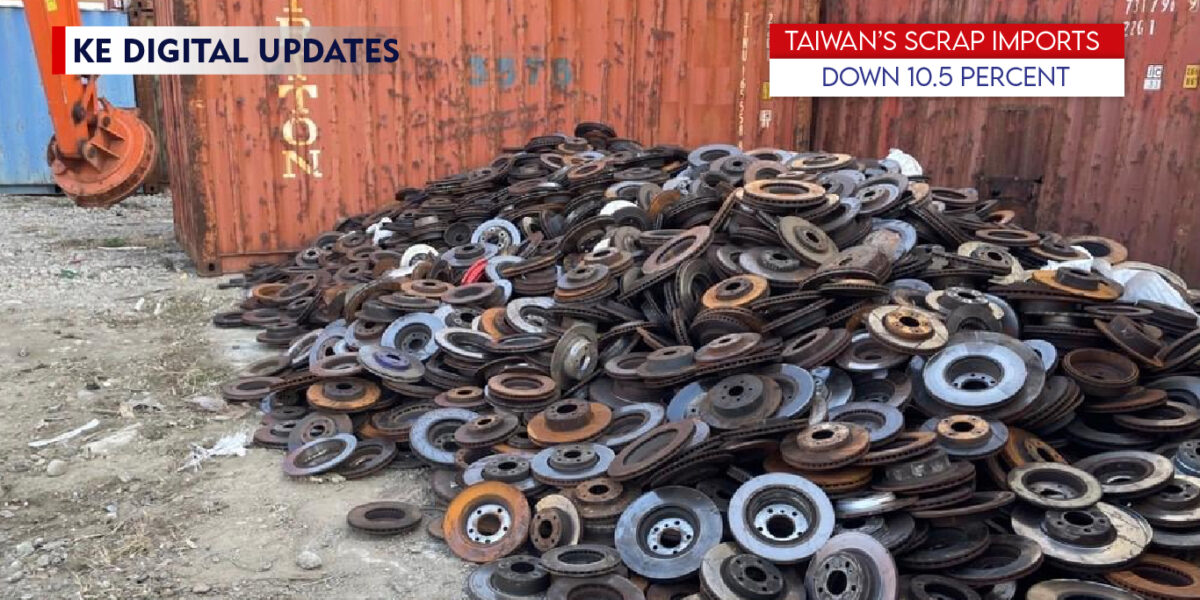Published on September 13, 2024
Taiwan’s ferrous scrap imports have experienced a notable decline in the first eight months of the year. According to official customs figures, ferrous scrap imports fell by 10.5 percent yearly, amounting to 2,035,231 metric tons (mt) from January to August. This decline reflects the shifting dynamics in the global scrap market and Taiwan’s evolving import strategies.
Major Suppliers and Market Shifts
The United States emerged as Taiwan’s primary scrap supplier during this period. The US exported 856,815 mt of ferrous scrap to Taiwan, marking a 1.8 percent increase compared to last year. This growth underscores the strong trade relationship between the two countries and the consistent demand for US scrap in Taiwan.
In contrast, Japan, another significant supplier, saw a substantial decrease in its scrap exports to Taiwan. During the specified period, Taiwan imported 443,853 mt of scrap from Japan, representing a sharp 31.7 percent decline from the previous year. This reduction highlights the competitive pressures and market adjustments faced by Japanese exporters.
Monthly Import Trends
Focusing on the month of August, Taiwan imported 215,245 mt of ferrous scrap. This figure indicates a slight decrease of 1.8 percent compared to the previous month and a more pronounced 6.2 percent decline year over year. The monthly fluctuations in import volumes reflect the ongoing adjustments in Taiwan’s scrap procurement strategies and the broader market conditions.
Implications for the Steel Industry
The decline in scrap imports has significant implications for Taiwan’s steel industry. Ferrous scrap is a crucial raw material for steel production, and changes in import volumes can impact production costs, supply chain stability, and overall market dynamics. The decrease in imports may prompt Taiwanese steel producers to explore alternative sources or adjust their production processes to mitigate potential disruptions.
Environmental and Regulatory Considerations
Environmental regulations and sustainability goals also play a role in shaping Taiwan’s scrap import patterns. As countries worldwide tighten regulations on scrap exports and imports to address environmental concerns, Taiwan’s import strategies may continue to evolve. Ensuring compliance with international standards and minimizing the environmental impact of scrap processing are likely to remain key priorities for Taiwanese authorities and industry stakeholders.
Conclusion
Taiwan’s 10.5 percent decline in ferrous scrap imports from January to August reflects the complex interplay of global market forces, trade relationships, and regulatory considerations. While the US has strengthened its position as a major supplier, Japan’s reduced exports highlight the competitive challenges in the market. As Taiwan navigates these dynamics, the steel industry must adapt to ensure a stable supply of raw materials and maintain its competitive edge in the global market.


